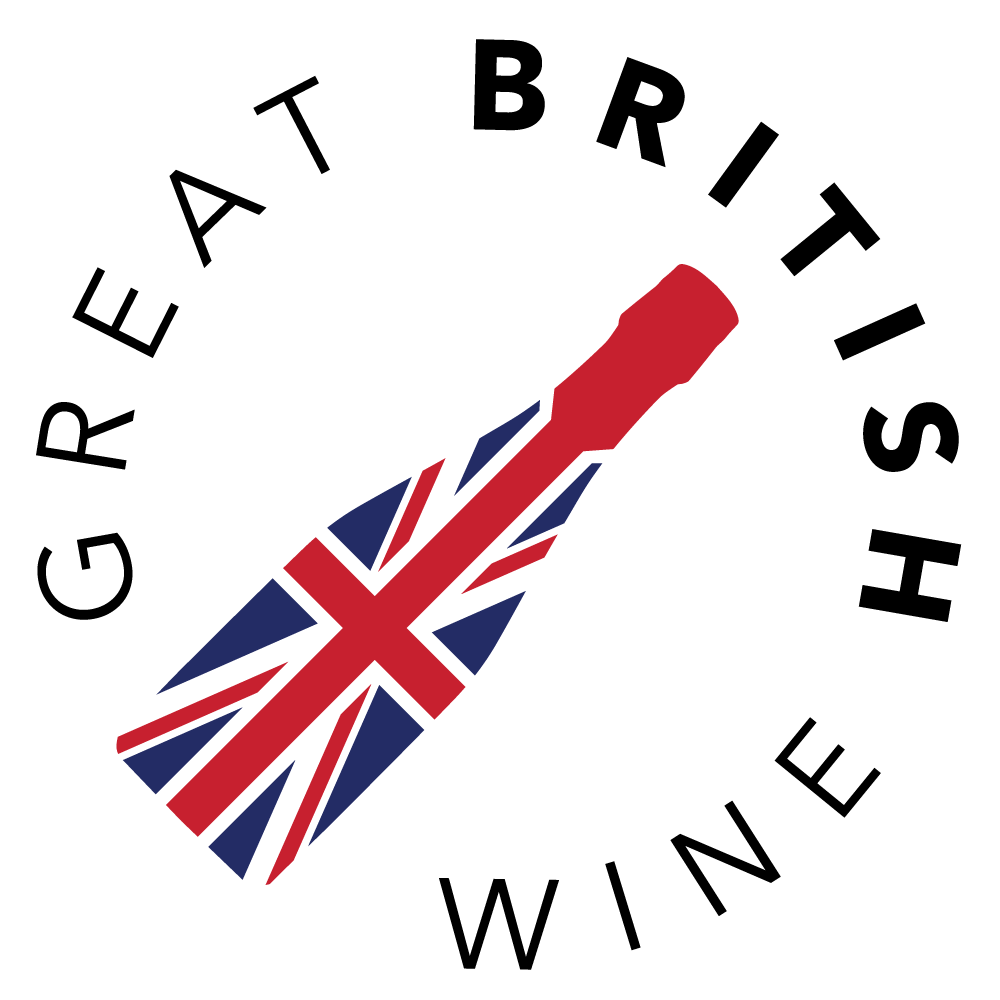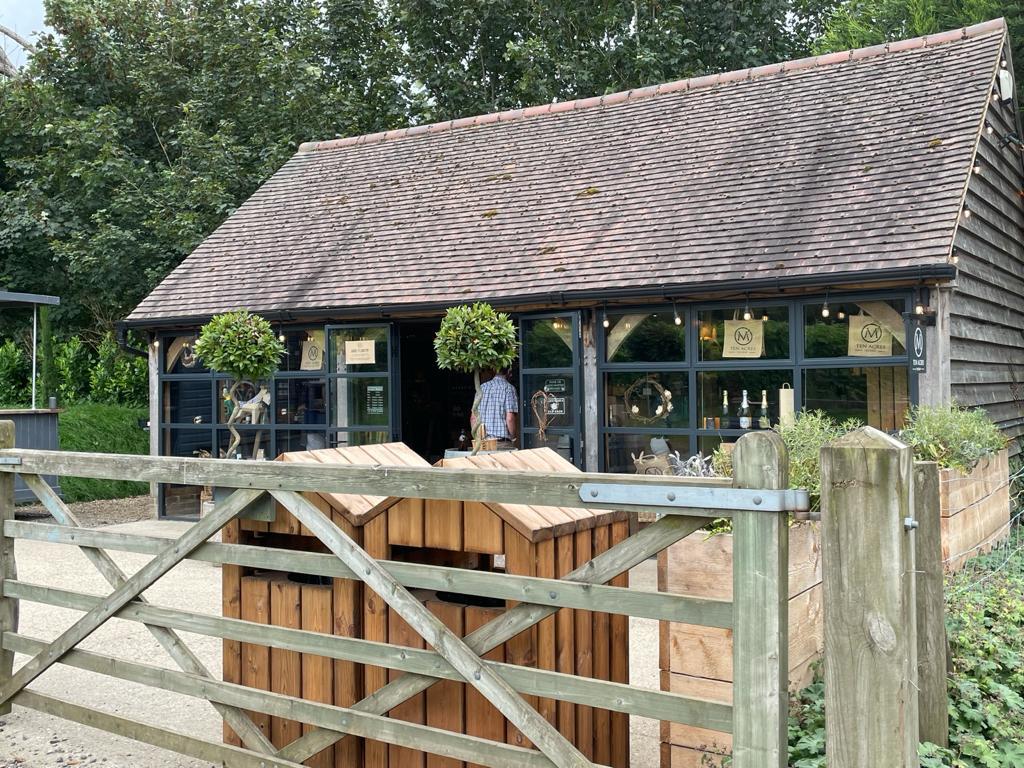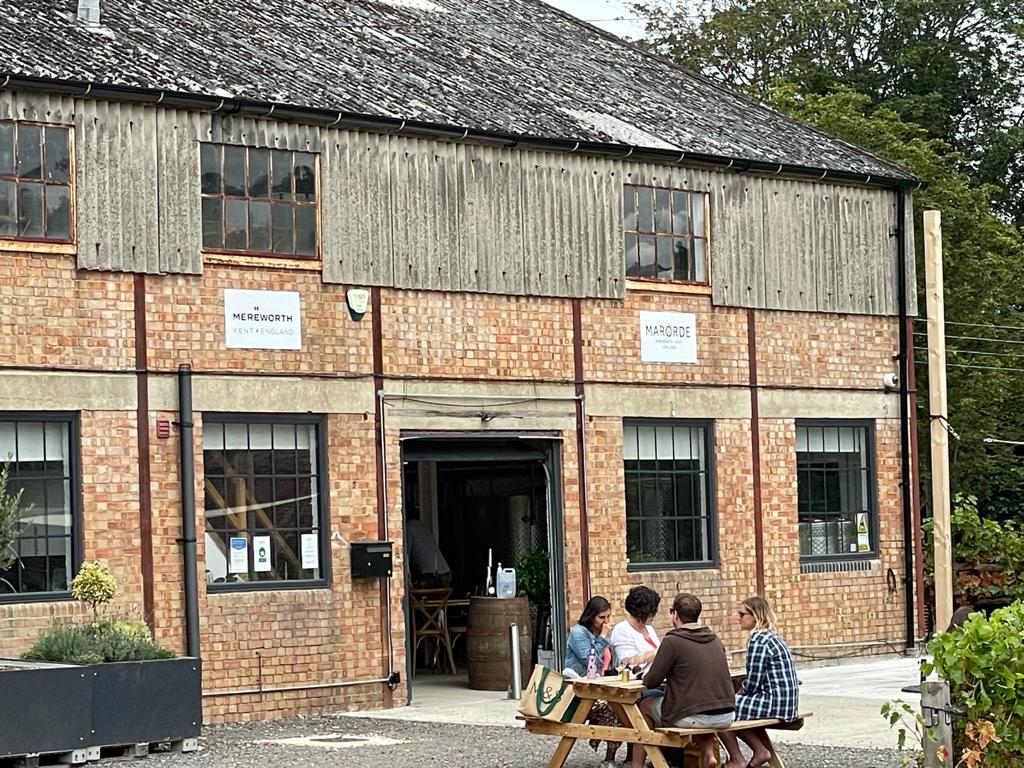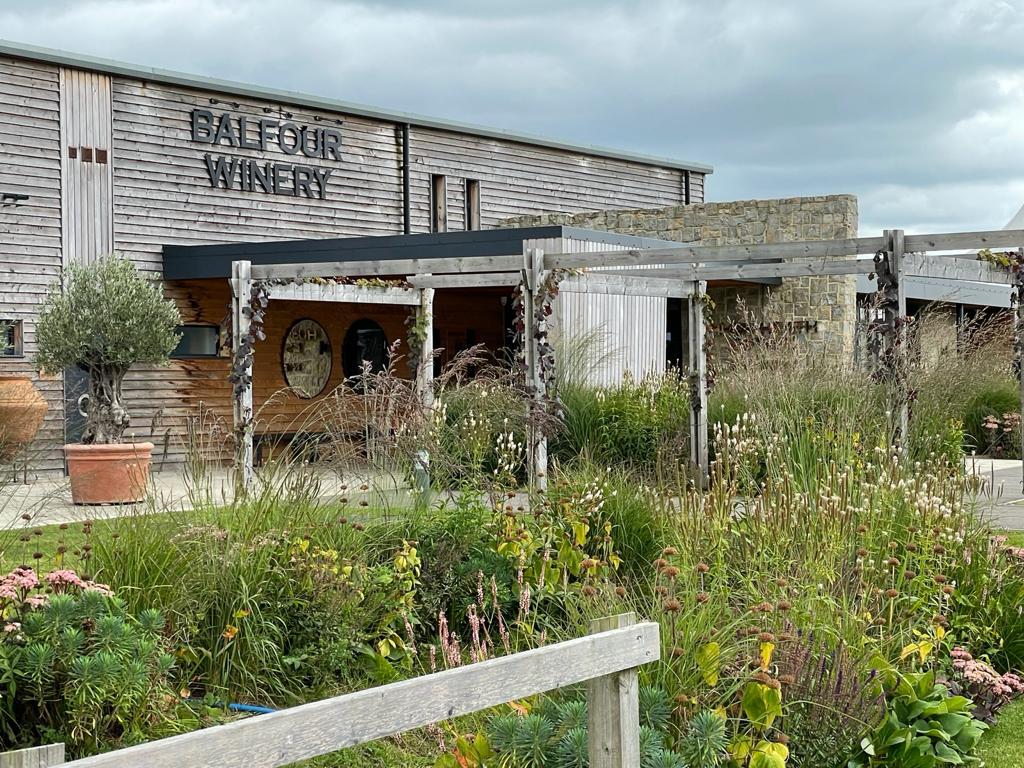Kent, the Garden of England, is the viticultural capital of the UK. With its long sunshine hours, and some of the warmest temperatures in the country, it always has been, despite Hampshire recording the first viable modern-day vineyard in the 1950s.
Planning a vineyard tour (even in this vinous county) has not always been easy. Until fairly recently, the relative scarcity of vineyards just couldn’t justify a trip if one wanted to visit five or six in a day. Even if that number were within driving distance, the erratic opening times of English vineyards didn’t really make such a venture realistic. But in the last ten years or so, two things have happened: many more vineyards have been planted and several more are open to the public. It was with this in mind that I planned a vineyard tour of Kentish sites with the intention of buying wine in each one, tasting if possible and cutting the driving between each vineyard to a maximum of thirty minutes. The invaluable website, www.winecellardoor.co.uk, indicates a cluster of vineyards open to the public in the west and central part of the county. So I came up with the following rota: Squerryes; The Mount; Mereworth; Yotes Court; Balfour Hush Heath; Chapel Down and Gusbourne, all, apart from Squerryes, The Mount and Gusbourne, located in or near the Kentish Weald.
Navigation was not straightforward. Unlike in Australia or South Africa where vineyards are often situated on the same stretch of unbending road, the Kentish ones are fairly far apart, mostly tucked down minor roads. Vigilant driving was required. There was negligible signage too. Until you were on the road where the vineyard is located you would have no idea that they were there. The exception is Chapel Down which has good roadside directions.
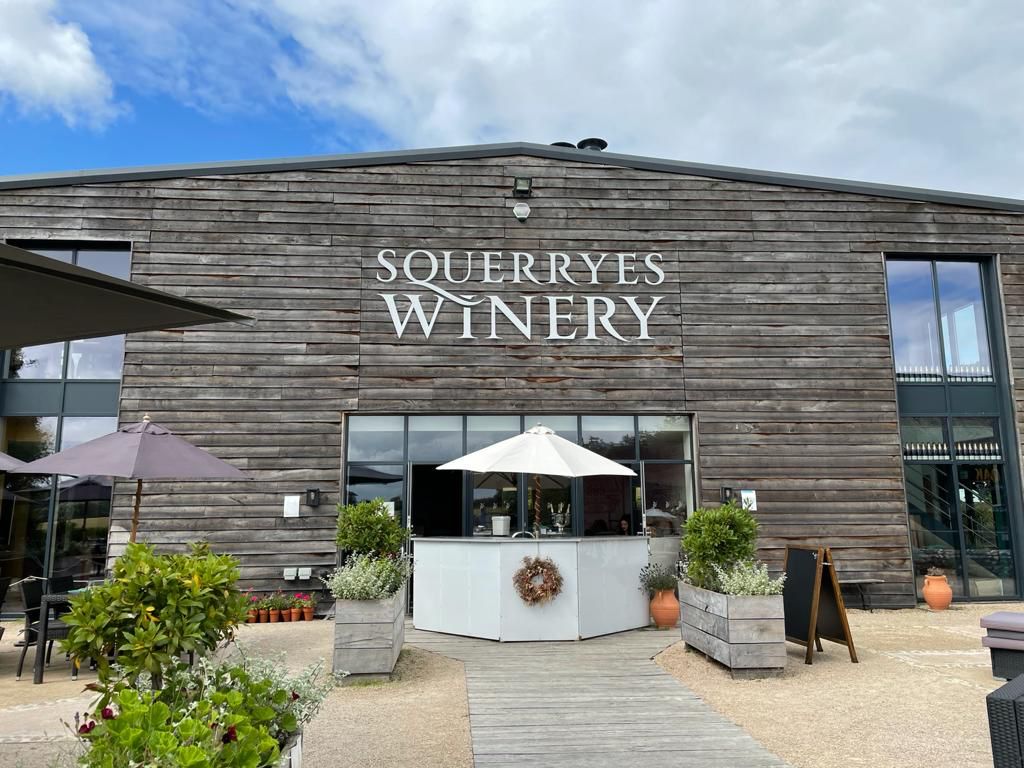
Our first port-of-call was Squerryes. This 50-acre vineyard, in the grounds of a 2500-acre site, is well set up for the tourist. Their restaurant is renowned for its excellent food and there is a superb farm shop on-site selling all their own wines, as well as a great selection from other English producers. Tours of the winery and vineyard are available (indeed one was taking place when we arrived) and there is even Westerham Brewery next door to the restaurant where you can buy their beers (all in cans). We bought Squerryes’ latest Vintage Brut Reserve and their Blanc de Blancs (as well as three cans of Westerham).
Next we headed further into the North Downs to the attractive village of Shoreham. The Mount Vineyard is right in the heart of the village but we struggled to find it. Eventually we discovered a broad alleyway where, about 300 yards from the road, and in amongst the vines, two little pop-up style shops are located. As well as a variety of gifts, they sell the full range of their still and sparkling wines. We bought a bottle of their Flint Key.
Bypassing Sevenoaks, our next target was Mereworth (pronounced Merry-worth). Like The Mount, this vineyard was situated in the middle of a settlement, this time on a fairly busy road in a large village. With the astonishing Palladian church spire dominating the outlook, we turned into a track on which were a series of more utilitarian buildings: converted warehouses. One of these was a bakery, another was the winery which had people outside enjoying the Mereworth wines by the glass and the bottle. There was no official tasting offered but we said we wanted to buy, and with that two fresh bottles were produced and two small glasses proffered. They have sold out of their ‘White from Black’ Blanc de Noirs but are currently offering the ‘White from White’ Blanc de Blancs and Sparkling Rosé. On the strength of the tasting we decided to buy the ‘White from White’. We were told that we should visit nearby Yotes Court and we responded that, funnily enough, that was exactly where we were headed next.
Situated high on a south-facing Wealden slope, Yotes Court is a new venture. Turning this beautiful site from a soft fruit-growing area to a vineyard has been an excellent decision, with four distinctive still wines from their inaugural vintage (2020) selling extremely well. This was the only vineyard where we actually bought a tasting which we enjoyed in their beautifully appointed tasting room overlooking the vines. Each wine’s name has a horse racing reference: the two Bacchus wines are called ‘On the Nod’ and ‘On the Bridle’, the Pinot Blanc, ‘Hands and Heels’ and the stunning still rosé (made from 100% Pinot Meunier) is named ‘Best Turned Out’. The two wines made from Bacchus showcased the two different styles of this variety: the more traditional, herbaceous, grassy style (‘On the Nod’), and the fuller, more tropical fruity Bacchus (‘On the Bridle’). We bought the Pinot Blanc (for its relative rarity value) and the Pinot Meunier (because it knocked our socks off!).
Balfour Hush Heath was our next destination and, without Sat-Nav, and with my hopeless map-reading, we would have got hopelessly lost. Seemingly in the middle of nowhere, this now well-established vineyard and winery was swamped with visitors when we arrived. The shop was doing extremely brisk business with people snapping upon the many wines on offer, in many cases after having had a tasting tour. I corresponded with Fergus Elias the day before and he said that the Chardonnay and Pinot wines were showing especially well at the moment. We ended up buying Skye’s Blanc de Blancs, Springfield Chardonnay and the new vintage (2020) of Luke’s Pinot Noir.
We had to get to Gusbourne before it shut at 5pm, so we hurried on to Chapel Down. The car park was packed when we arrived, as was the shop and the outside terrace. We knew what we wanted here: the latest vintage of Three Graces Sparkling, Kit’s Coty Bacchus 2018, Lamberhurst Bacchus (of which I’ve long been a fan), and all the entry-level wines.
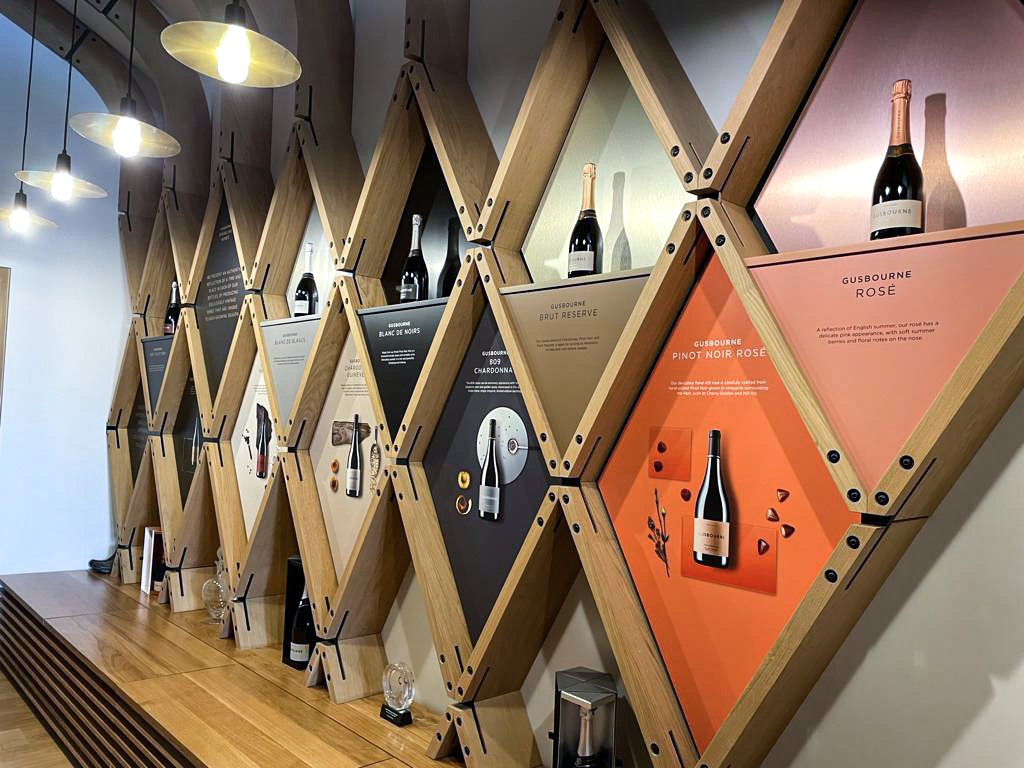
The terrain had been getting gradually less precipitous since the approach to Hush Heath, and Gusbourne is located on the fringes of some of the flattest landscape in the country, in Romney Marsh. Still, the site at Gusbourne’s headquarters (they have another, smaller, vineyard near Chichester in West Sussex) is gently undulating and most attractive. When we arrived, people were sitting outside enjoying the tranquillity, special Gusbourne picnics and, of course, the brilliant wines. We headed to ‘The Nest’, a kind of display space and the starting point of the various tours that they offer. It’s also where you buy their wines, and we purchased a bottle of Pinot Noir 2019 and a Blanc de Blancs 2016. They were getting set up for an evening meal in the marquee as we left (they have offered pop-up dining events this summer from The Hand and Flowers, Marlow, Tom Kerridge’s restaurant). Our tour was at an end and it was time to do battle with motorways 20, 26, 25 and 40 in that order.
My impressions are that the Kent vineyards are extremely welcoming to tourists, offering a varied experience with the opportunity to taste and eat on-site, and to buy their wine, often at a reduced price. However, unlike in Australia, South Africa and New Zealand, one can’t just turn up and expect to be offered a free tasting. You have to ask for it and will invariably have to pay for it. But all the vineyards we visited offered a tour, and that can’t be said of all overseas vineyards we’ve visited. It’s just that, with the pandemic, there has been so much pent-up demand that tours are currently booked up for months in advance. I would also say that Kentish vineyards are clued up to the commercial possibilities of selling wine, with numerous spin-off opportunities being utilised. And people were there – in their droves.
And what of the principal product? You won’t be surprised to learn that I think, not only is it already fabulous, but has boundless potential for even greater improvement. Kent is deservedly the wine capital of English Wine – and arguably of English Wine tourism too.

